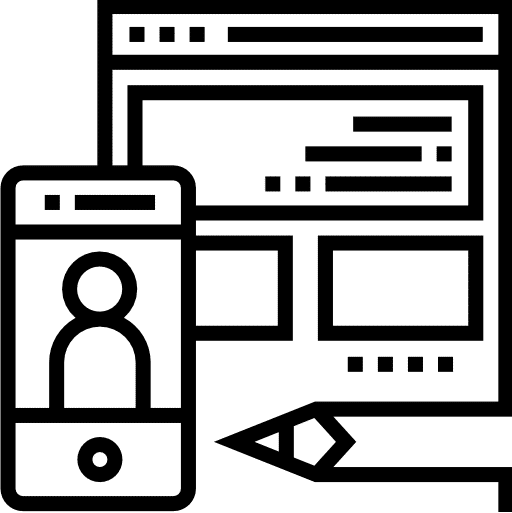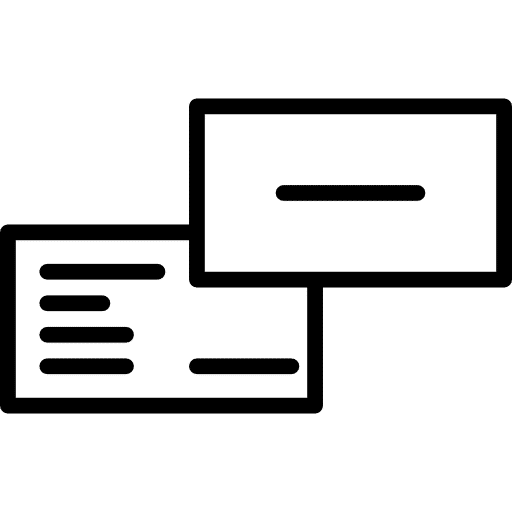Get Started
/FUZE STUDIO
Overview of Website Costs
Summary of Website Design Costs in 2025
“It depends” – This is going to be your answer. What makes up the cost of a website is how it looks and how it works as part of more extensive functionality.
If you want your website to do more than look pretty, for example, if you need a custom online quiz system, or the website needs to integrate with an API to handle bookings, then this is all going to factor into your website design quote. Our easy to use cost estimator runs through a simply questionnaire of what our project managers will look at when doing up a quote for a website and is an excellent tool for getting an idea without talking directly to a website project manager.
If you’re still in the early stages and need a rough idea, here is a rough guide of our prices with different levels of functionality:

Simplified
Pricing Breakdown
Simple
- A brochure style website, usually based on a theme.
- For individuals, start ups or micro business.
- Around 1-5 pages
- Ideal for a simple web presence.
Approx $1,500-2,000 | Project timeline of 4 weeks
Small Business
- A custom design & developed website (not based on a theme)
- For SME's, for a unique brand appropriate website.
- Project managed following our in depth process.
- Built on a scalable content management system (CMS).
- Can includes a extra functionality such as blog, contact form, Google Maps, newsletter integration.
Approx $4,000 – 5,000 | Project timeline of 6 weeks
Interactive Website
- Includes all features of small business website.
- Usually for unique or luxury brands or those aiming for unique web presences.
- Includes a researched and optimised user journey.
- Features interactive/animated effects that react when the user loads or interacts with the site, scroll effects, mouse parallax, custom video animated elements etc.
- Creates a 'wow' factor, better user engagement, and a memorable online experience .
Approx $6,000 – 8,000 | Project timeline of 8-12 weeks
Ecommerce
- Includes all features of small business website.
- Can support a range of payment online solutions including subscriptions, credit/debit cards, and Apple/Android pay.
- A range of shipping models (including drop shipping).
- Built on ecommerce management system (CMS) with complete control of your store & products.
- Can list up to 10,000's products/categories.
Approx $6,000 – 10,000 | Project timeline of 8-12 weeks
Custom Web Application
- A web application with high level of required functionality.
- These can include login systems, a online booking system, directory listing system, comparison site, etc.
- These types of sites are usually complex and require a high level of development consideration
Approx $15,000 – 100,000 | Project timeline of 12-26 weeks
Enterprise Level Website
- Includes all features of smallbusiness/interactive website.
- Ideal for larger corporations or enterprises that require large, well thought out and highly optimised websites.
- Usually with multiple locations & possibly multi language.
- These sorts of site usually come with a in-depth brief, extensive brand guidelines and ambitious goals.
Approx $10,000 – 100,000 | Project timeline of 12-26 weeks
Getting things ready
Preparation
Weigh up the options
Types of Website Design
Way to get it done
OVERVIEW
There are a wide range of options available when building and designing a website. All of which vary in terms of the price, quality of the design and require different levels of involvement during the process. They’re best described in terms of a scale; the higher the cost, the better the quality and less time consuming for the client and vice versa.
Looking at the lower end of the scale, a website builder is a template-based tool that requires the individual to build the entire site themselves without having to do the manual coding. Ideal for someone just starting out with very minimal knowledge of website design, who can dedicate their time and needs to keep costs down. However, you won’t necessarily achieve a high quality, bespoke site at the end of it. Those with more of a budget might look to hiring a freelancer either in Australia or offshore, who for an hourly fee will design and build the site for them. Offshore freelancers tend to cost less than those in the Australia due to exchange rates.
Moving to the top end of the scale are established design agencies who build and design your website completely bespoke to your specification. Thus, requiring much less of your time, but you pay a premium for their service because they have a wide range of skilled employees such as a project manager, content writers, designers, developers and so on. This option is possibly more suited to those where the opportunity cost of building a site themselves is not worth it.
We’ll now go on to expand on each of the options previously mentioned.
Free, but time consuming
WEBSITE BUILDERS
Pros:
- This is the cheapest option available. You are solely designing and building the site yourself, so other than the fee that the tool you choose charges, the only other cost is your time. This greatly reduces start-up costs for businesses which for some is fundamental as not everyone has a large budget to spend when starting out.
- Agile – If you need to edit your content and make changes, you can easily do this yourself at no extra cost, you have instant access to your site and no one else to go through, such as a designer or agencies, in order to get these changes done.
- The standard and quality of website builders has increased, and there is also a much wider range of templates now available to users in terms of design, fonts, colours and so on. Thus making it possible to produce an attractive website very quickly these days using something like Squarespace, for example.
- Simplicity. Most tools utilise drag and drop technology, enabling users to upload pictures and alter text with an easy click and drag of your mouse. This is a very ‘hands on’ approach, which is perfect for individuals who want total control and to be completely involved. This easy user interface reduces the technical side of website building, as there is no need to write the code itself. This is the beauty of a template; all the coding is pre-written. So, users do not need to be qualified in design or development. Anyone can use a website builder.
Cons:
- Building a website yourself can be very time consuming. There’s no one else to give you advice, make changes, proof your content, or run your business at the same time. The opportunity cost really needs to be considered, is your time better of spent running your business or trying to build your companies website?
- Rigidity – Site builders are template based and with templates come limitations. Those that don’t know html/css coding can come up against a brick wall when there’s a change/layout/style you want, but can’t achieve due to restrictions of a template layout. This can mean that users are forced to go to a agency/freelancer, in order to acheive the change they originally wanted, somewhat negating the cost benefits.
- Hidden Costs – There are often monthly, somewhat hidden costs. For example, a website builder may offer the first 2 pages of your site for free but then after that there is a cost per page, then a monthly fee for hosting your site for only so many sessions, or a monthly fee to use a piece of functionality. So, what on the offset appears to be a free/low-cost can in fact be more expensive over time than other options.
- SEO optimisation – It can be much harder to optimise a website builder for SEO purposes because of the rigid functionality. There’s less scope to add things like schema, amend and change meta, perform technical optimisation as you need it to optimise code and ensure the site runs quickly. The more rigid it is, the less ability there is to SEO optimise it. As an example, historically, some site builders page loads were perfromed by AJAX transitions, therefore when GOOGLE comes to crawl it, it can’t effectively crawl the site and index all pages.
- Lack of Ownability – You never own the website. This is often overlooked because of the attractive pricing. But in effect, you are renting the use of the website you are building. This could be argued as acceptable because you can have it as long as you need, however you are missing an opportunity to create a valuable asset to your business. A company that pays an agency or freelancer to design a website for them ultimately owns the code to that website which has a value, a tangible asset that then adds to your company’s value. So, should you come to sell at any point this can be taken into account as an asset or investment.
Outsourced
OFFSHORE
This is a step up from using a website builder where you’re doing everything yourself. It involves hiring someone abroad, for example in India or Poland, to build the site for you at a much-reduced cost.
Pros:
- One of the main advantages of this option is that it can be extremely good value for money. If you find a good developer at a cost-effective price, you are likely to receive a good quality website for a reasonable price. You haven’t had to compromise on quality and you’ve also saved on cost.
- Another advantage is the time it saves on your part. When using a website builder, it’s all on your shoulders and requires 100% of your involvement. Hiring an offshore freelancer greatly reduces the time required from you, as they are doing the majority of the work. It’s also a much cheaper option than hiring a freelance website designer in Sydney Australia.
Cons:
- The greatest disadvantage here lies in communication, language barriers. Communicating exactly what you want for your website may not always run smoothly, and you are presented with something that isn’t quite what you asked for. This leads to things needing to be repeated, re-worked multiple times in order to achieve your specification, which adds time onto the project and therefore increases your costs, which is frustrating. There is inevitably a time difference working with someone from another country, which can delay waiting on responses from them and vice versa.
- There is an element of risk involved here too, as you will never fully know the quality of a freelancer’s work until you start to use them. Sometimes they may cut corners and do things incorrectly because they are working on multiple sites, not just yours, and want to make more money. It’s important to look at a portfolio of theirs if you can, to get an idea of the quality of their design and development, but also to ensure they are who they say they are and not out to scam people for money. So, in summary, offshore freelancers save you money but there are risks involved that should be carefully considered.
One Man Band
FREELANCERS
Pros:
- Cost. Compared to hiring an agency, this option has a lower price tag.
- Availability. Freelancers often have a high level of availability, often you can be connected with a freelancer in a matter of hours using one of the many freelancer sites.
- Relationship. Because freelancers are 1:1 with you, you can form a good working relationship with them, as they are very involved and hands on with the job.
- Flexible/Responsive – They tend to make a real effort because they rely on the work, and want to keep the client happy. You have a direct line to them, so often it means reponse times are much faster.
Cons:
- Limited scope of skills – For example, a designer often will not have backend development skills, or if they do they their skill might be limited compared to a specialist. Often you’ll usually need to hire a designer and a developer. Your role can then become project management and clients often migrate to agencies for this reason, to have everything managed under one roof.
- Some Australian freelancers are expensive – hourly rates can often be the same price if not more than agency costs for the more “boutique” freelancers.
- Risk – Finding the right freelancer involves risk. As mentioned previously, its hard to know the standard of their work until you use them. You can end up wasting time and money. Often freelances can oversubscribe their work, to maximise income and then struggle with time management and deadlines, with rushed work the quality often also suffers.
- Availability – As well as being a pro this is also a con. You may have found yourself a good freelancer to use regularly for work, but there is no guarantee that they will be available when you need them to be. They are their own boss and therefore can take time off whenever suits them, regardless of what work you offer them. Then you’re back to square one, finding someone else to pick up the job.
Freelancers bridge the gap between offshore and agencies. They do away with some of the offshore issues, and you can meet with them locally face to face and discuss specifications. But you still come up against some of the same risks involved in using offshore. It’s a good middle ground if you can’t take the next step in using an agency.
Specialists
AGENCIES
Pros:
- Multi-diverse set of skills in each area. You’ll have a project manager to deal directly with you and effectively manage your project, a designer who knows best trends and designs for your demographic, developers to create clean lightweight and fast code, an SEO specialist to consider the SEO optimisation of your site, and copywriters to proof the content.
- Time saving for you – Once initial discovery has been carried out by the agency, involvement can be as little as signing off designs and key areas4 in the project, freeing up your time.
- High quality end product – The skill set, and resources of an agency almost certainly guarantees a good level of service and high-quality results. View their portfolios to pick one with the right design style for you.
- Ongoing support – In most instances, agencies will offer a warranty or ongoing care once a project is complete, providing ongoing advice and support post-project in order to resolve any issues or to carry out updates as required.
- Availability – Due to having a large workforce/team, agencies can almost always take on the work ensuring you can have things done in the given deadlines.
- Reassurance – Agencies will have security policies to protect you or your client’s information, including ISO and GDPR compliance. If you run a site such as an ecommerce store you will need to carry out due diligence, which often an agency can reassure.
Cons:
- There is one main disadvantage: they’re expensive. Highly skilled specialists working together to create the best possible end-product based on a given brief comes with a price. Do factor into this the time saving, reduced risk and high quality. Agencies can work in a very hands-off manner, with a project manager overseeing your project, ensuring a quality end product with multiple team members working to limit risk and to deliver within given timeframes.
- Timescales – Often the turnaround times are longer as creating a bespoke, high quality end product takes time, even for multiple team members.
The Extras
Associated Costs
Month by month
MONTHLY COSTS
- Hosting – In order for your website to be accessible online, you will need to ‘host’ it on a server. Hosting costs can range anywhere from completely free, to $500 a month. For an efficient, unmanaged hosting service you can expect to pay in the region of $10-80 a month, whereas a more premium managed service will usually be priced upwards of $250.00. If you’re using a website builder, this will be included as part of your monthly fee.
- SEO – Once you have a website, you’ll ideally want to market it, which is where SEO comes in. If you want your site to rank well in search engines or you’re wanting to make best use of social media by running things like Facebook or LinkedIn ads, then you’re going to need an SEO campaign.
- Newsletter systems – Mailchimp for example, though free up to a certain point, requires a monthly subscription to use.
- Plugins – Some high-end plug-ins, such as those found in Shopify, will come with a monthly fee.
- Retainers and care packages – If you require technical support or on-going updates to your website, you’ll need to factor this in.
- Social media marketing – Depending on the amount of time you have to dedicate to it, you may require someone to manage and update your social media accounts, and integrate these with your website.
- licenses – Some assets such as fonts and stock photos/videos require licences that sometimes have a ongoing monthly cost. A service such as Pixelo may help you avoid ongoing monthly fees for site assets.
Annual commitment
YEARLY COSTS
- Domain – In order to set up a website you’ll need a domain, which comes with a yearly fee. A domain is registered for a minimum term of one year, which should cost you somewhere between $5-150. Alternatively you may wish to purchase a high-end domain from its existing owner. This can cost a great deal more, depending on the domain in question. In fact, one of our clients recently purchased one in the region of $10,000.
- SSL Certificate – In order for your site to appear as https, you need an SSL Certificate. Https is now a requirement for all websites, without one Google will not rank your site well and you will receive browser security warnings. In order to have this enabled you need, as a minimum, a domain validation SSL Certificate. This comes with a yearly fee of around $150.00
Factor it all in
GENERAL COSTS
- Image/ Video licenses – It’s not possible to take images from anywhere you feel like online, so if you don’t have your own photography, you’ll need to purchase stock images and license them for use. A stock image can cost anywhere from $1-250, depending on the image and where you’re sourcing it from. As part of our website builds we offer 20 stock images, based on the spec and the client’s individual requirements. For a video license, you should expect to pay in the region of $50+.
- Copywriting – One of the key considerations in building a website is the amount of content that will be required. If you’re not literate or good with words and don’t have a lot of spare time, we highly recommend you hire an agency or freelancer, who can write the copy for you. A 5 page website as a minimum should be around 2,500 words of fully proofed, well considered content. This is a vital point to consider as content is key when it comes to SEO and rankings.
- Plugin licenses – Sometimes rather than coding certain functionality into a site, it can be quicker and easier to use a plugin. These could include things like sliders for images, booking systems, and payment processors.
- Payment processing fees – If you’re running an ecommerce site, then you’ll need to consider payment processing fees. For example, if you’re using Paypal at the checkout, they will take 3% of all payments that are processed through your account. If someone purchases a product for $100, you will actually receive $97, whilst PayPal receives $3.00.
.com, .co.uk, .org, .co
DOMAIN NAMES
The price for a domain name can range anywhere from $5 – $150 per year per domain. Depending on your specific requirement, you can either purchase a location based domain, such au .com.au or a top level .com domain, which is not area specific, and will be slightly more pricey.
You can register a domain for 1 year, but we would always recommend registering for at least 2-3 years or more if possible. Registering for longer periods, such as 4-5 years is ideal, and comes with an added SEO benefit, as Google will determine that the domain is going to be around for a long time.
You can also opt to purchase a premium domain from companies or individuals who’ve purchased them previously. These will usually be priced at upwards of $100. Once you buy a premium domain, you’ll only be required to pay the renewal fee which is just a small % of the original cost.
When purchasing your domain, be aware of companies trying to upsell you unnecessary extras, such as ‘domain name protection’ or ‘who is opt out’. You could vary quickly find your bill going from $6 to $60 for a domain.
Essentially, keep it simple. Unless you’re purchasing premium, your domain name should always be a relatively cheap yearly cost.
You can use our domain name and hosting company to register domains at cheaper than normal prices. Goto www.maddog.domains
Simplified
Hosting Explained
Shared Website Hosting
This is the cheapest form of entry level hosting, you’ll be sharing a hosting space and resources with many other site, which comes with it’s pros and cons.
The cons are limited resources and availability, meaning in turn that they are the least powerful. They are also more likely to be targeted by bots and hacking, as shared hosting tends to be less secure and an easier target.
The pros are that it is cheap and accessible, making it a good solution for small websites, with a lower budget, receiving around 500-1,000 sessions per month.
$5-20 per month
VPS
Virtual Private Server – ‘virtually’ private hosting, which essentially means you’re given your own hosting space inside a larger server, which is broken down into 20-30 small VPS’s.
A VPS gives you additional flexibility, available storage, and allows you to harden your hosting by having it configured for additional security.
Additionally, there are much more resources and power available to you, as well as root access.
A VPS will be tend to be able to deal with higher sessions, have additional memory allocation, and may allow your website to load quicker (depending on how your site has been built).
$50 – 260 per month
WordPress Hosting
This is the cheapest form of entry level hosting, you’ll be sharing a hosting space and resources with many other site, which comes with it’s pros and cons.
The cons are limited resources and availability, meaning in turn that they are the least powerful. They are also more likely to be targeted by bots and hacking, as shared hosting tends to be less secure and an easier target.
The pros are that it is cheap and accessible, making it a good solution for small websites, with a lower budget, receiving around 500-1,000 sessions per month.
$30-200+ per month (depending on traffic requirements)
Cloud
With Cloud hosting you don’t have a set space available to you, but rather you’ll essentially be pooling resources from lots of different locations as and when you need them.
The pros? It’s extremely flexible, as you pay per usage. Making it the perfect solution for those starting small and looking to expand. It’s also ideal for those who experience large, but predictable, peaks and troughs in monthly sessions.
On the flip slide, whilst pay per usage can be a positive, it can also be unpredictable. For example, if you get a sudden influx of unexpected, not relevant traffic you’ll likely be receiving a large bill at the end of the month. It’s can also complex and requires a lot of technical set up, meaning it’s likely you’ll need to pay a professional to do it for you.
Prices for Cloud hosting tend to vary greatly depending on the level of set up and support required, as well as the monthly usage.
$POA
Managed Hosting
Virtual Private Server – ‘virtually’ private hosting, which essentially means you’re given your own hosting space inside a larger server, which is broken down into 20-30 small VPS’s.
A VPS gives you additional flexibility, available storage, and allows you to harden your hosting by having it configured for additional security.
Additionally, there are much more resources and power available to you, as well as root access.
A VPS will be tend to be able to deal with higher sessions, have additional memory allocation, and may allow your website to load quicker (depending on how your site has been built).
$30 – 90 per month
CDN
Content Delivery Network – A CDN can help to boost your website’s loading time by delivering your sites content from multiple servers and locations, reducing latency and speeding up first byte time.
A CDN can also help with optimising images as they’re loaded, which can be a really useful tool for those unskilled in re-sizing imagery appropriately for their website.
Free – $200 Per month
Email hosting
Your email hosting needs to be considered, and with a reputable provider, in order for you to avoid running into deliverability issues. In our experience, the best providers tend to be either Google Apps or Microsoft Exchange.
Email hosting is completely separate from your website design, however, given access to the domains DNS is required for web hosting, it often comes hand in hand.
$5 – 25 per email address, per month
How will it look?
Associated Design
Your company logo and branding forms the foundation of your website and company as a whole. It’s important to recognise that these are two completely separate things.
Your website is the channel through which your logo and branding is ultimately presented, so you will of course need these things in place prior to beginning the process of designing and developing your site.
If you’re designing a website then you’re going to need a logo.
Generally speaking, your logo will set the colour scheme and typography for the website, assuming your logo contains text.
There are several ways you can go about obtaining a logo:
- The cheapest and quickest way is to purchase a basic logo template online. However this is not an option we ever recommend, given the lack of originality and rationale. It’s also likely to still need editing after you’ve bought it.
- You could hire a freelance designer, which will set you back around $100-400. This can be a great option if you have a freelancer you know and trust to do a good job.
- You can have your logo designed by the company designing your website. As it’s such a vital element of your website design, most website design agencies will offer a logo design service, coming in at around $500-700. Although this is the most pricey option, we believe it’s well worth the investment, given that it’s the only option guaranteed to leave you with a future-proof logo design that you love.
There’s a big difference between a logo design and branding.
Branding dives into the psychology of colours and words, exploring your competitors and your company’s messaging to determine the overall look and feel of your brand.
You’ll want to carefully consider how much time, effort and resources you need to put into your branding to build your company’s presence at this stage. A small start up for example, may look at launching with just a logo in place, opting to explore their branding as their company grows. Whereas for a high value venture, we would highly recommend acquiring a detailed brand strategy and identity, before pressing forward with a website.
Branding services can cost anywhere from between $100 for a basic package. All the way up to 10,000+ for a more premium service.
Additional design elements to consider:
- If you’re starting a business from scratch, you’re likely to need printed materials designed, such as Business Cards, Letterheads, Comp Slips, Brochures etc.
Social Media
- If you’re marketing your business through social channels, you’re going to need your logo resized appropriately for each platform, along with profile and cover images to promote your brand.
Newsletters
- Depending on your level of requirement or the type of email marketing you’re looking to carry out, you may require design for bespoke email templates, as well as e-brochures or PDFs.
Pricing for these elements is obviously highly dependent on your individual requirement. As an agency we commonly design a number of these under our standard hourly rate of $65+vat per hour. Or in cases where a lot of additional design work is required, this may be quoted as a single price at a reduced hourly rate.

Timing & Phases
Stages of Website Design
01
DISCOVERY
3 days – 2 weeks
02
WIREFRAMING
03
DESIGN
04
DEVELOPMENT
05
CONTENT OF POPULATION
2 -4 days
06
QA, TESTING AND LAUNCH
3 days – 2 weeks
Phase 1
DISCOVERY
In the first stage, our Designers and Project Manager perform discovery to plan and inform the subsequent phases of the project.
Areas include, but are not limited to:
- Identify demographics for targeting.
- Research the current website and the limitations/scope of design.
- Understand the tasks users will carry out on the site.
- Understand any marketing funnels and engagement statistics.
- Mapping of pages (sitemap & structure).
- Review content for pages where applicable.
- Identify demographics for targeting.
- Identify any value proposition.
- Analytics data – device statistics, mobile first design, etc.
- Create a redirect policy.
- Analyse user behaviours.
- SEO initial review.
Phase 2
WIREFRAMING
Prior to prototyping the designs, we create wireframes for all page layouts, from which point we can assess the feasibility of the proposed structure and functionality of the site. Depending on the individual requirements, we’ll create wireframes for desktop, tablet and mobile, taking into account the user needs and journey.
The aim of the wireframe is to create a visual understanding of a page and all pages of the site in relation to one another before the creative process gets underway, potentially saving considerable time and money in the testing and amendments phases later on in the project.
Phase 3
DESIGN
Once the discovery process is complete and the wireframes have been agreed and signed off, we draw on the information gathered to determine the look and feel of the website, creating a design prototype in photoshop.
The homepage is created first and once signed off will form the design basis for the remaining sub pages of the site.
These are then delivered via the Invision system, which allows the client to comment on any revisions that may be required. Communication is vital at this stage of the project, in order to ensure the final site design is in line with the client’s requirements, taste and branding.
A dedicated design process is one of the key areas you miss out on when using a website builder.
Phase 4
DEVELOPMENT
During this phase, the graphic elements from the final design prototype are used to develop the actual functional, digital version of the site.
Similar to the design process, the homepage will be developed first, followed by the sub pages. Once the front end of the site has been developed, the back-end will be coded onto the CMS and the website is then ready to be populated with content.
Elements such as interactivity, contact forms, ecommerce and so on, are all made functional during this stage.
Phase 5
CONTENT POPULATION
Phase 5 is where the site really comes to life, as we populate it with content.
In cases where the client is providing their own content we utilise Content Snare (a content gathering tool). This allows the client to easily add appropriate content and drop in assets and media files, in a simple drag and drop format.
In the case of a website redesign, we can also source content from a previous version of the website.
At the end of this phase, the client is provided with a staging link to their website, which they can use to view the final version of the site and request any final tweaks necessary.
Phase 6
TESTING & LAUNCH
Once the client is happy to sign off on the website, it will move into the testing phase prior to launch. As an agency, we carry out a thorough quality assurance assessment on every site we build. This involves checking that the site is operating optimally across all devices and screen sizes, as well as testing all of the functional elements of the site. We’ll also review GDPR compliance and ensure that all necessary privacy and cookie policies are in place.
Again, one of the vital elements you miss out on with a website builder is a thorough quality and interoperability testing process. If the agency you’re working with doesn’t have one, then they’re probably not worth the asking price!
Once the testing process is complete, the website is pushed live, on either the client’s hosting or on our own, with a 2 week grace period, should any issues arise or amends be required.

Marketing
Promote your new website
You’re unlikely to see SEO or online marketing as an associated cost on most articles about the cost of a website, but it’s an incredibly important thing to consider. After all, what’s the point of a website without an online presence?
If you don’t know what SEO stands for, then you’re probably not ready to build a website. SEO isn’t technically required to build a website, but without a level of SEO your website will have no/little visibility online.
If you’re planning on handing out business cards or brochures with your website address, or you’re going to be relying on people searching for your brand name on Google (provided it’s unique) then you don’t have to worry about SEO. It’s very likely that this is not the case, and you’re going to be relying on people searching for terms such as ‘accountants Surrey’ to find you online. “Build it and they will come” simply isn’t how it works anymore – SEO is something you need to consider if you’re serious about your online presence.
You’ll usually find that SEO is only considered after the website has been created, which isn’t ideal as it means that your website will not be prepared to rank in search results, or worse, the structure you have decided upon may actually be detrimental. As such, you need to be prepared and be ready to consider SEO as an important associated cost of a new website.
If you’re considering a website builder, it’s likely that this will already be well optimised in terms of technical optimisation (loading speed, etc). However, you will need to consider things like keywords, on page content, and how you’re going to lay your site out to accommodate SEO. Website builders will typically provide tools within the website, which will help you to achieve a very rudimentary level of SEO. These rely on a pre-existing knowledge of SEO – which takes years to learn how to do properly.
Freelancers and agencies, on the other hand, are more capable of taking care of your SEO for you. If you’re serious about your rankings, you’ll need to consider an SEO company, SEO freelancer, or a website agency that offers SEO such as Creative Brand Design.
These ads come in many forms, the most popular ones being Google Ads and social ads including Instagram, Facebook, and Linkedin.
Time should be spent determining which platform you’d be best placed for, e.g. whether you should be advertising on Instagram or Linkedin (or both) to reach your target audience and demographic. You’ll also need to consider the expense of the ad creatives/graphics, as well as the cost per click/impression charged separately by the advertising platform.























